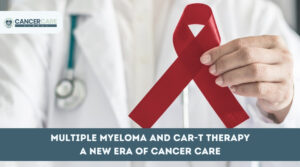Stomach cancer, or gastric cancer, is a serious health condition that requires prompt and effective treatment. For many patients, seeking care abroad offers opportunities for advanced treatments and significant cost savings. Cancer treatment in Mexico has emerged as a leading option, combining state-of-the-art medical technology, experienced professionals, and cost-effective care. This comprehensive guide explores why Mexico is an attractive option for stomach cancer treatment, highlighting the role of top clinics, innovative treatment options, and overall patient experience.
Table of Contents
Advanced Medical Facilities in Mexico
1. World-Class Clinics
Mexico boasts several internationally accredited clinics renowned for their advanced cancer care. Among the top choices for stomach cancer treatment are Immunity Therapy Center in Tijuana and MexStemCells Clinic in Mexico City. Both clinics offer cutting-edge treatments and a patient-centered approach to care.
Immunity Therapy Center, Tijuana
This clinic specializes in immunotherapy and integrative cancer treatments. Immunity Therapy Center is known for its personalized approach to cancer care, utilizing advanced immunotherapy techniques to enhance the body’s natural ability to fight cancer. The center offers treatments such as dendritic cell therapy, which involves modifying a patient’s immune cells to better recognize and attack cancer cells.

MexStemCells Clinic, Mexico City
MexStemCells Clinic is at the forefront of stem cell therapy and regenerative medicine. The clinic uses innovative stem cell treatments to support traditional cancer therapies and promote recovery. MexStemCells Clinic is known for its commitment to using cutting-edge technology.

2. Cutting-Edge Technology
Mexican hospitals are equipped with the latest medical technologies, ensuring that patients have access to advanced diagnostic and treatment options. Key technologies include:
- Robotic Surgery: Robotic-assisted surgery provides precision and control for complex procedures, such as gastric resections and tumor removals. This minimally invasive approach leads to quicker recovery times and reduced complications.
- Advanced Imaging: High-resolution imaging technologies, such as PET scans and MRI, are used for accurate diagnosis and staging of stomach cancer. These tools help in planning effective treatment strategies.
- Targeted Therapies and Immunotherapy: Mexican hospitals are increasingly adopting targeted therapies and immunotherapies, which are designed to specifically target cancer cells while minimizing damage to healthy tissues.
Innovative Treatment Options
1. Surgical Options
Surgery remains a primary treatment for stomach cancer, particularly in the early stages. In Mexico, several advanced surgical techniques are available:
- Partial Gastrectomy: This procedure involves the removal of part of the stomach, typically used when the cancer is localized. It aims to preserve as much of the stomach as possible while removing cancerous tissue.
- Total Gastrectomy: For more advanced cases, a total gastrectomy involves the complete removal of the stomach. The surrounding lymph nodes may also be removed to ensure that all cancerous cells are excised.
- Robotic-Assisted Surgery: This minimally invasive approach allows for greater precision and less trauma compared to traditional open surgery. It is particularly beneficial for patients with complex cases or those requiring extensive resections.
2. Chemotherapy
Chemotherapy involves the use of drugs to kill cancer cells or inhibit their growth. Mexican clinics offer a range of chemotherapy options, including:
- Neoadjuvant Chemotherapy: Administered before surgery, this approach helps shrink tumors, making them easier to remove and increasing the likelihood of a successful outcome.
- Adjuvant Chemotherapy: Given after surgery, this treatment aims to eliminate any remaining cancer cells and reduce the risk of recurrence.
- Chemotherapy Regimens: Mexican hospitals offer various chemotherapy regimens, tailored to the patient’s specific type and stage of stomach cancer.
3. Radiation Therapy
Radiation therapy uses high-energy rays to target and destroy cancer cells. This treatment is often used in combination with other therapies to enhance overall effectiveness. In Mexico, advanced radiation techniques, such as intensity-modulated radiation therapy (IMRT) and stereotactic body radiation therapy (SBRT), are available.
4. Targeted Therapy
Targeted therapy focuses on specific molecules involved in cancer growth. This approach is used to inhibit the growth of cancer cells while sparing healthy tissues. In Mexico, targeted therapies are increasingly available and tailored to individual patient profiles based on genetic and molecular testing.
5. Immunotherapy
Immunotherapy leverages the body’s immune system to fight cancer. It includes checkpoint inhibitors and other novel treatments designed to enhance the immune response against cancer cells. Mexican cancer centers are at the forefront of adopting these innovative therapies, offering patients access to cutting-edge treatments that may not be available in their home countries.
Cost Considerations
One of the significant advantages of seeking stomach cancer treatment in Mexico is the cost savings compared to other countries, particularly the United States. The cost of medical care in Mexico is generally lower due to various factors, including lower labor costs and the favorable exchange rate.
| Treatment | Mexico Cost Range | U.S. Cost Range |
|---|---|---|
| Surgery | $10,000 – $25,000 | $30,000 – $60,000 |
| Chemotherapy (per cycle) | $1,500 – $4,000 | $10,000+ |
| Radiation Therapy | $5,000 – $15,000 | $20,000+ |
These cost savings make Mexico an attractive option for international patients seeking high-quality care at a fraction of the price.
Overall Patient Experience
1. Personalized Care
Mexican clinics prioritize personalized care, tailoring treatment plans to each patient’s specific needs. From initial consultations to follow-up care, patients receive individualized attention and support throughout their treatment journey.
2. Accessibility and Convenience
Mexico’s proximity to the United States and its well-developed infrastructure make it a convenient option for patients traveling for medical care. Many hospitals and clinics offer services in English, and there are numerous accommodations and travel services available to assist international patients.
3. High Standards of Care
Despite the lower costs, Mexican hospitals maintain high standards of care and adhere to international medical guidelines. Many facilities are accredited by organizations such as the Joint Commission International (JCI), ensuring that they meet rigorous quality and safety standards.
4. Supportive Environment
Mexican healthcare facilities often provide a supportive environment for patients and their families, including counseling services, nutritional support, and patient education programs. This holistic approach helps patients manage the emotional and physical challenges of cancer treatment.
FAQs about Stomach Cancer Treatment in Mexico
What types of stomach cancer treatments are available in Mexico?
Mexico offers a comprehensive range of stomach cancer treatments, including advanced surgical options (such as partial and total gastrectomy), chemotherapy, radiation therapy, targeted therapy, and immunotherapy. The choice of treatment depends on the type and stage of the cancer, as well as individual patient factors.
How do the costs of stomach cancer treatment in Mexico compare to other countries?
The costs of stomach cancer treatment in Mexico are significantly lower than in many other countries, particularly the United States. For example, stomach cancer surgeries in Mexico can cost between $10,000 and $25,000, while similar procedures in the U.S. can range from $30,000 to $60,000.
Are Mexican hospitals accredited for cancer treatment?
Yes, many hospitals and clinics in Mexico are accredited by international health organizations, such as the Joint Commission International (JCI). These accreditations ensure that facilities meet high standards of quality and safety in patient care.
Can I find English-speaking medical professionals in Mexico?
Yes, many hospitals and clinics in Mexico have English-speaking medical professionals who are experienced in treating international patients. This helps ensure clear communication and a comfortable experience for patients traveling from abroad.
How can I find the best cancer treatment center in Mexico?
To find the best cancer treatment center in Mexico, consider factors such as hospital accreditation, the experience of medical staff, available treatment options, and patient reviews. Researching top hospitals and consulting with medical tourism agencies can also help you make an informed decision.






